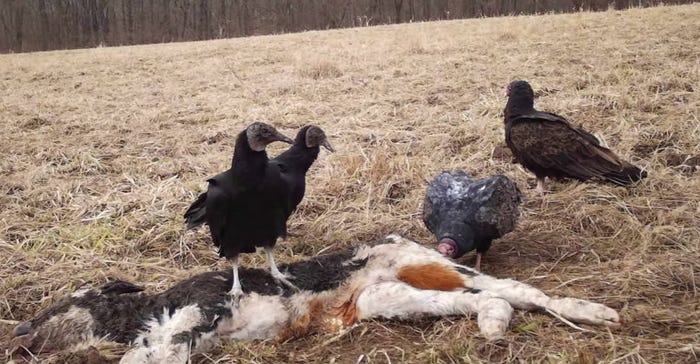
Two types of vultures exist in Indiana. The red-headed turkey vulture feeds only on the carcasses of dead animals. Its cousin, the black vulture, is an aggressive bird that will, on occasion, kill other animals for food.
This includes baby calves. However, the problem is that baby calves die of many other causes as well. The first step to knowing if you have a problem with black vultures attacking live animals is to know that you truly have black vultures in the area. That starts with identification.
“Black vultures normally feed on animal carcasses, which provide a valuable service to our ecosystem,” says Thomas Butler, wildlife biologist for USDA’s Animal and Plant Health Inspection Service Wildlife Services. “However, they can become more aggressive and may attack and kill calves, lambs, piglets and other weak animals. This predatory behavior often results in serious injury to livestock, because vultures target the eyes and soft tissues. In most cases, due to the extent of their injuries, affected domestic animals must be euthanized.”

As migratory birds, black vultures are federally protected by the Migratory Bird Treaty Act, as well as by state laws and regulations, which means they can’t be killed or destroyed without a U.S. Fish and Wildlife Services Migratory Bird Depredation permit.
Study the side-by-side pictures provided at the beginning of the story carefully, experts suggest. The turkey vulture on the left is the larger of the two vultures. It weighs about 4 pounds with a 6‐foot wingspan. The adult has a featherless, bright red head which sets it apart. Body feathers of a turkey vulture are mostly dark brown or black with pinkish legs. Turkey vultures have a longer tail than black vultures.
The black vulture is shown on the right. It weighs less than 4 pounds. The wingspan of this species is typically less than 5 feet. Expect them to be mostly black, with white or gray legs.
Tom J. Bechman contributed to this story.
About the Author(s)
You May Also Like






